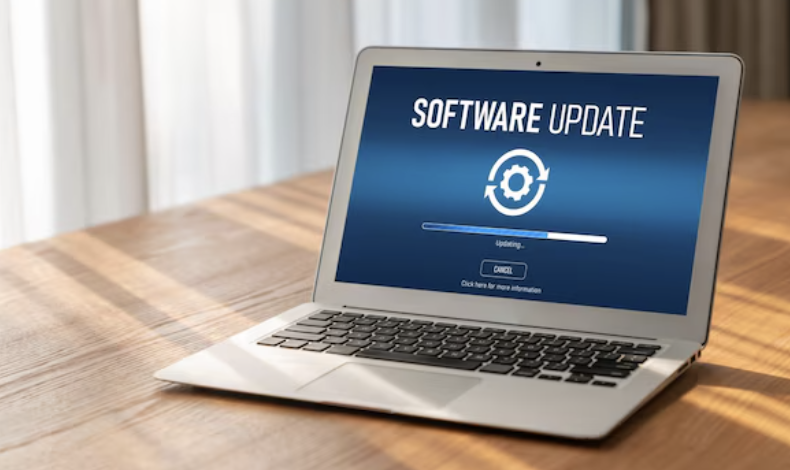In today’s fast-paced digital world, the risks of outdated software can be more severe than you might think. While it might seem harmless to delay updates or hold onto old systems, outdated software can expose you to security vulnerabilities, compatibility issues, and operational inefficiencies. Understanding these risks is crucial to protecting your data and ensuring smooth, secure operations. Don't let your software become a weak link in your tech arsenal—discover why staying current is not just a best practice, but a necessity.
What is outdated software?

Outdated software refers to programs or systems that are no longer supported with updates or security patches from their developers. This can mean the software is old, no longer compatible with newer technology, or hasn't been updated to address emerging security threats. By neglecting to update, you expose yourself to the risks of outdated software, making your systems more susceptible to attacks and inefficiencies.
But why exactly do outdated software and operating systems pose cybersecurity threats?
Outdated software and operating systems present serious cybersecurity risks for several reasons:
- Ransomware Vulnerabilities: Older software often has unpatched security flaws, making it easier for attackers to deploy malware, steal data, or carry out other malicious activities.
- Business Disruptions: Using outdated systems can lead to major disruptions. Just one outdated software component can expose the entire infrastructure to cyber threats, causing downtime, financial losses, and damage to your reputation.
- Third-Party Risks: Partners or vendors using outdated software can also pose a cybersecurity risk. It's crucial to evaluate and monitor the security practices of third parties to prevent these risks.
- Compatibility Issues: Newer security tools and technologies may not work with outdated operating systems, which can further increase the security risks associated with using old software.
- Easy Target for Attackers: Outdated systems are often targeted by attackers because they are generally less secure and easier to exploit.
The risks of outdated software and operating systems

Imagine your business running on old, unsupported software—it's like leaving the front door wide open for hackers. Outdated software isn’t just a minor inconvenience; it’s a ticking time bomb for security breaches, compliance issues, and operational chaos. Dive into the critical risks of outdated software and see why keeping your systems up-to-date is more crucial than ever.
Malware and Ransomware: Failing to update software can lead to severe consequences like data loss, financial harm, and operational disruptions. A prime example is the Apache Log4j2 vulnerability, which impacted nearly every network organization and required immediate response to address the threat.
Data Breaches: Outdated software exposes systems to various risks, including data breaches that endanger sensitive information. In fact, 60 percent of data breaches are caused by unpatched vulnerabilities in outdated software.
Compliance Issues: Adhering to industry standards is crucial, and outdated software can make compliance difficult. For example, failing to update software can result in fines from regulatory bodies like PCI DSS for non-compliance.
Performance Risks: Outdated systems can disrupt business operations, whether they involve IoT devices or cloud services. If any component of the system uses outdated software, it can jeopardize the entire setup, leading to significant financial and reputational damage.
Legal Risks: Using outdated software can also result in legal complications. Increased security vulnerabilities from old software heighten the risk of breaches, which can lead to legal actions from customers, partners, or other stakeholders.
Why updates matter

Skipping software updates might seem like a time-saver, but it’s a dangerous gamble. The risk of outdated software includes everything from security breaches to system crashes. Each update closes critical gaps and keeps your defenses strong. Don’t let outdated software jeopardize your data and operations—and find out how you can stay ahead of cybersecurity threats and reduce the risk of outdated software:
Antivirus and Anti-malware Software: This software continuously monitors your devices to detect and remove threats, reducing the risk of outdated software by protecting against new and evolving malware.
Firewalls: Acting as a barrier between your internal network and external sources, firewalls enforce security rules to prevent unauthorized access and mitigate potential cyber threats related to the risks of outdated software.
Strong Passwords and Multi-Factor Authentication (MFA): Secure your accounts with strong passwords and MFA, adding layers of protection that help counteract the vulnerabilities often associated with outdated software.
Employee Education and Awareness: Training employees on cybersecurity best practices is crucial. It helps recognize and address risks, including those stemming from the risks of outdated software, by promoting vigilance and informed decision-making.
Operating System Hardening: By implementing security measures and patches, you address vulnerabilities in your operating system, reducing overall risk and enhancing protection against threats.
Regular Software Updates and Patches: Keeping your software current is essential for maintaining security and efficiency, directly addressing the risk of outdated software.
Removing Unnecessary Applications and Services: Uninstalling unused software reduces the attack surface, minimizing potential entry points for cyber intruders and limiting the impact of outdated software.
Data Segmentation: Dividing your network into separate segments with distinct access controls helps contain breaches and manage risks, including those associated with outdated software vulnerabilities.